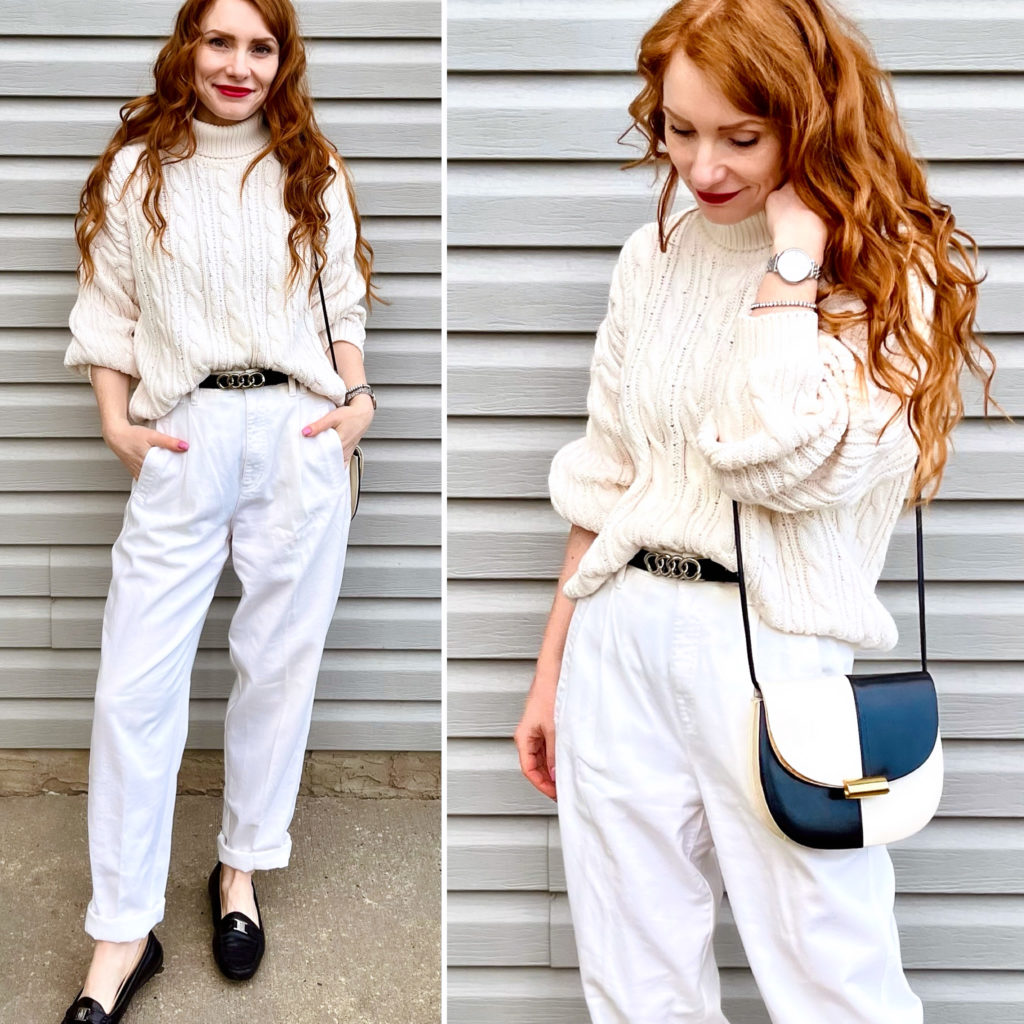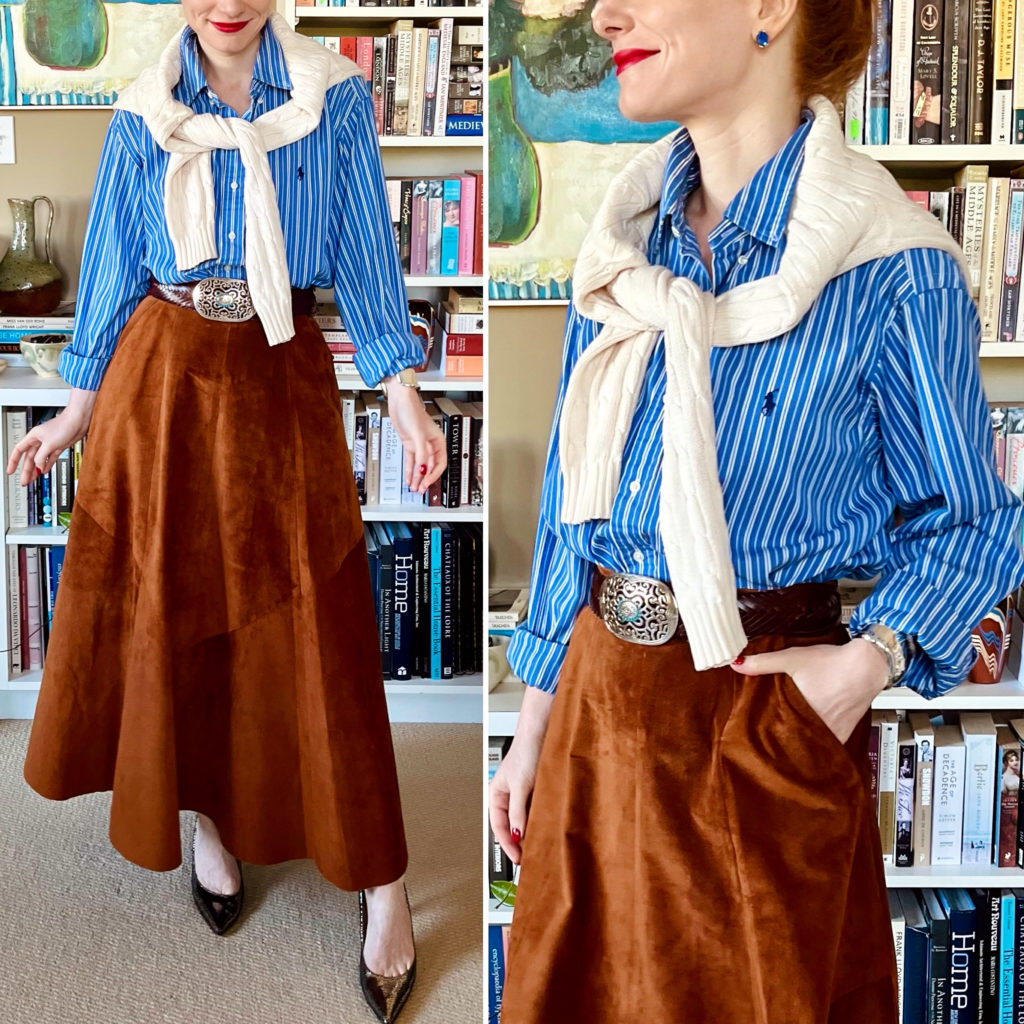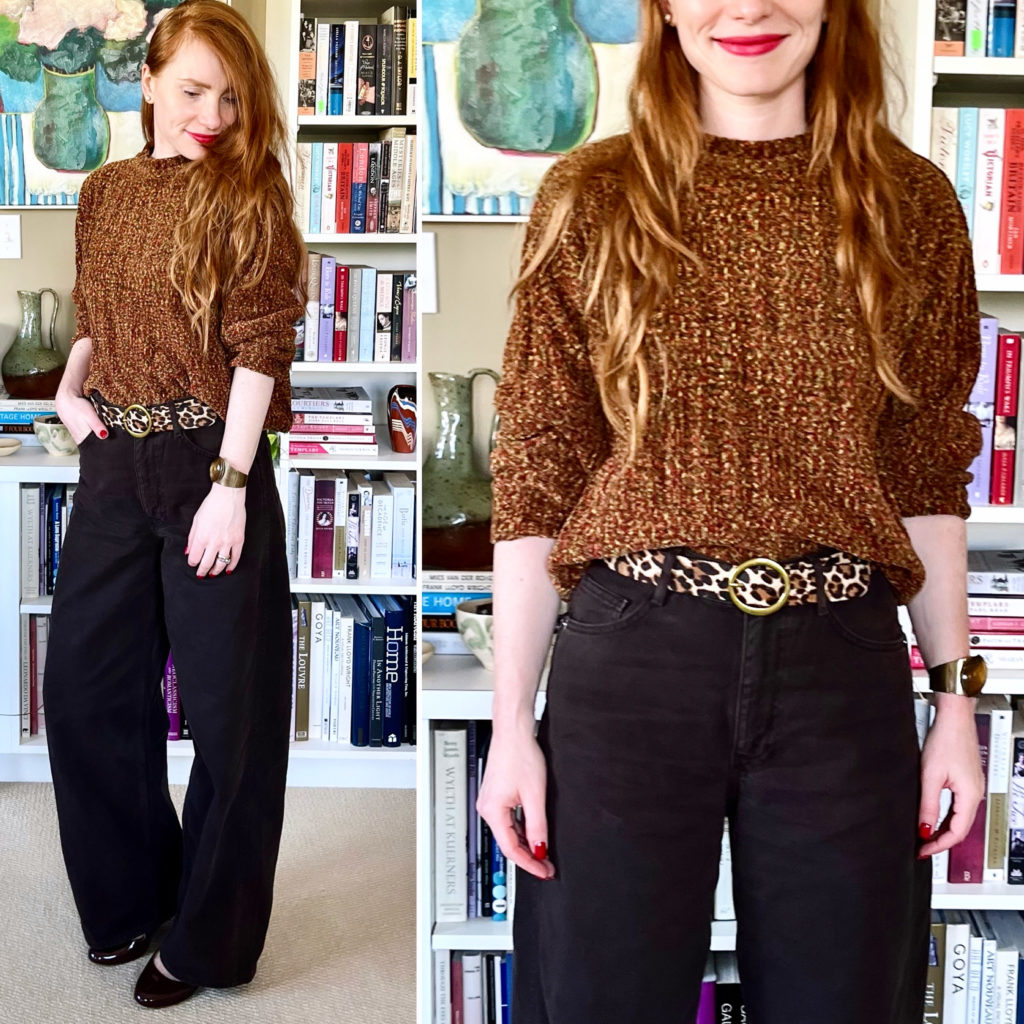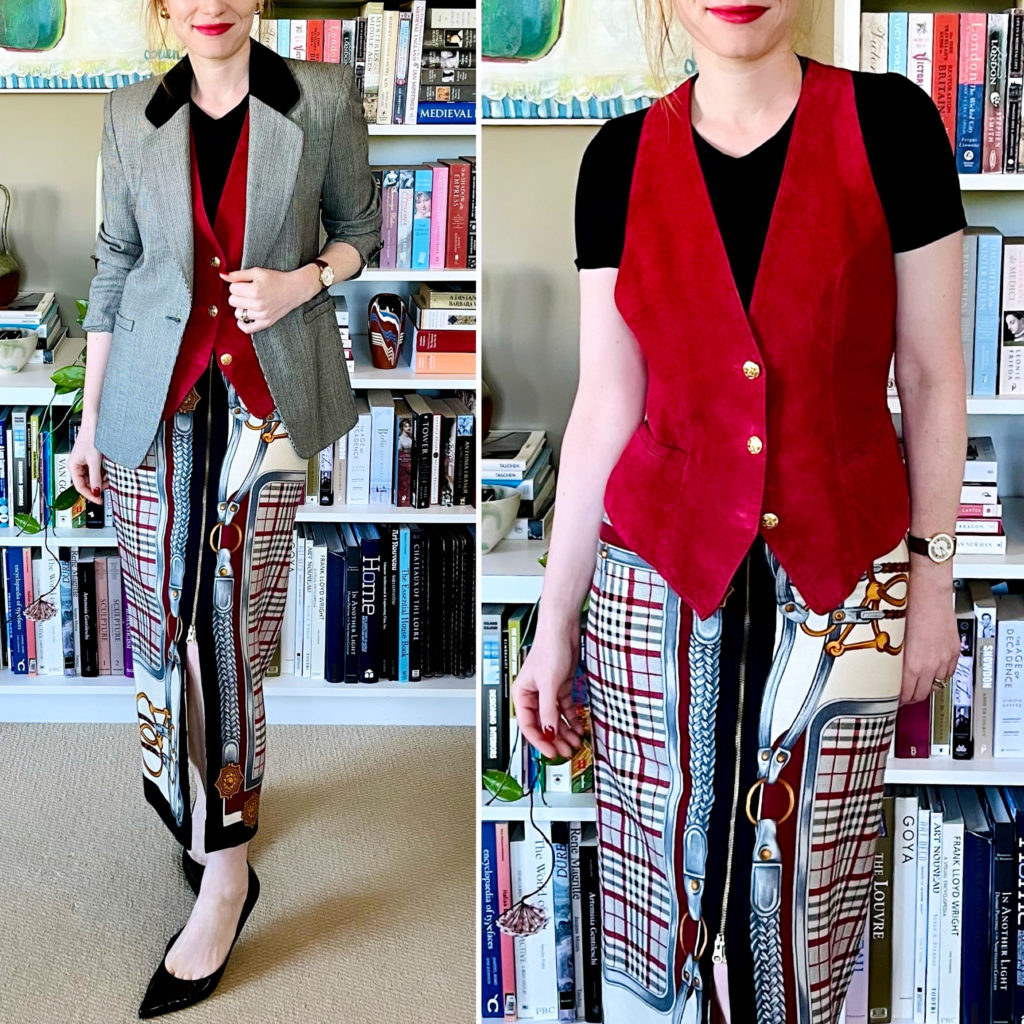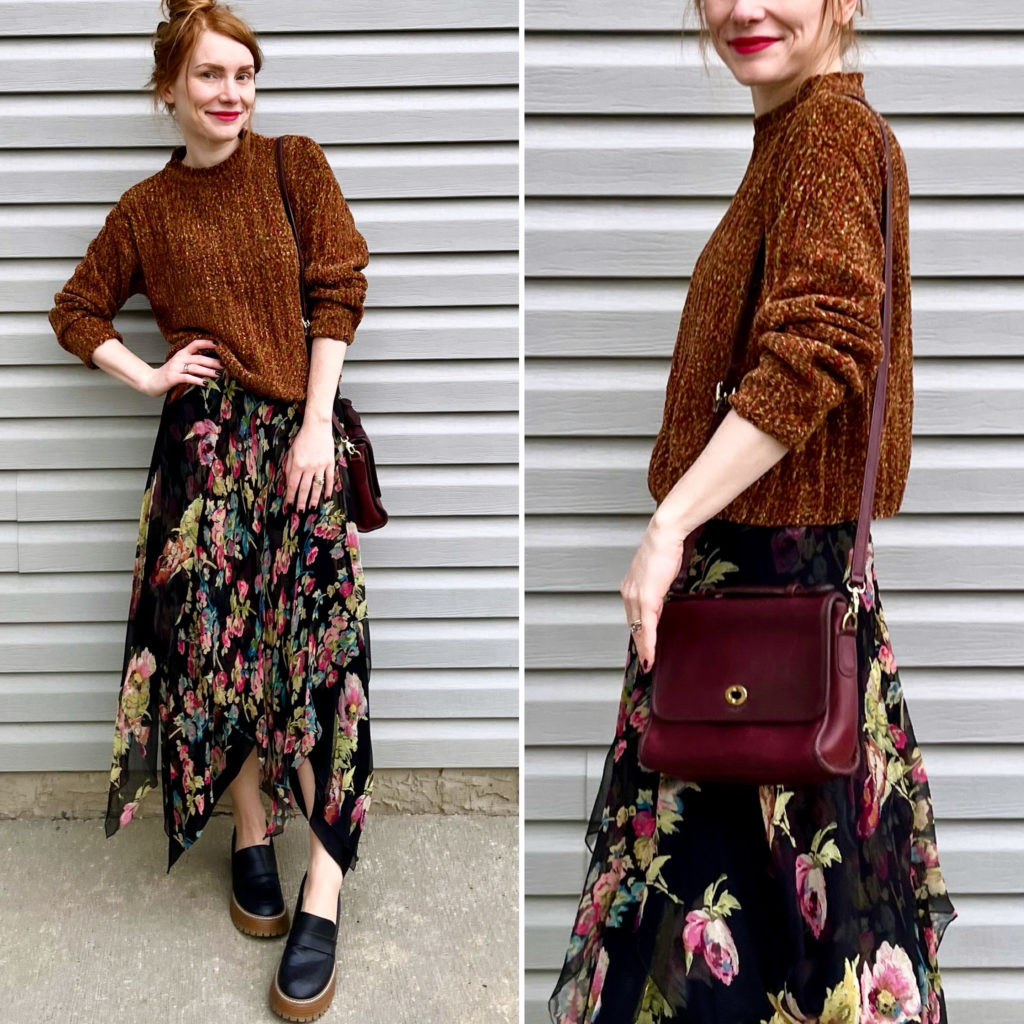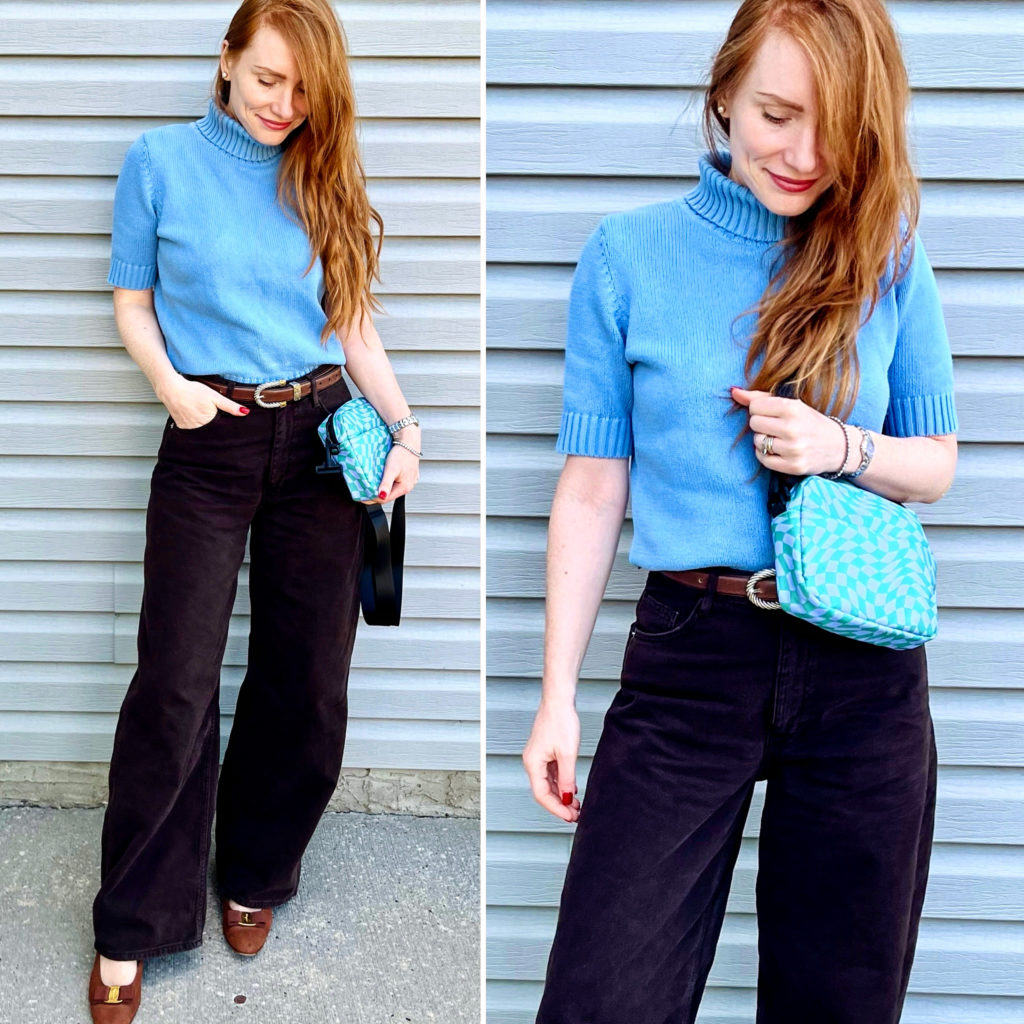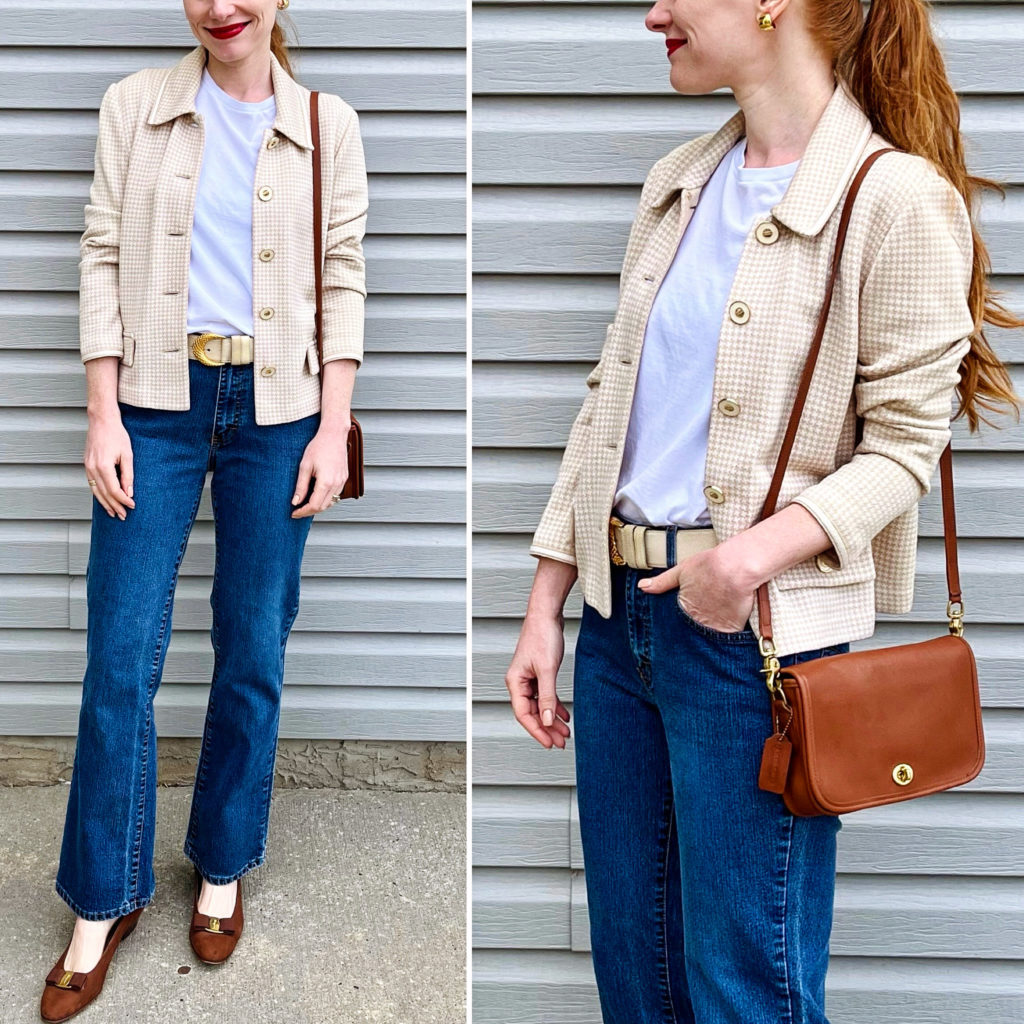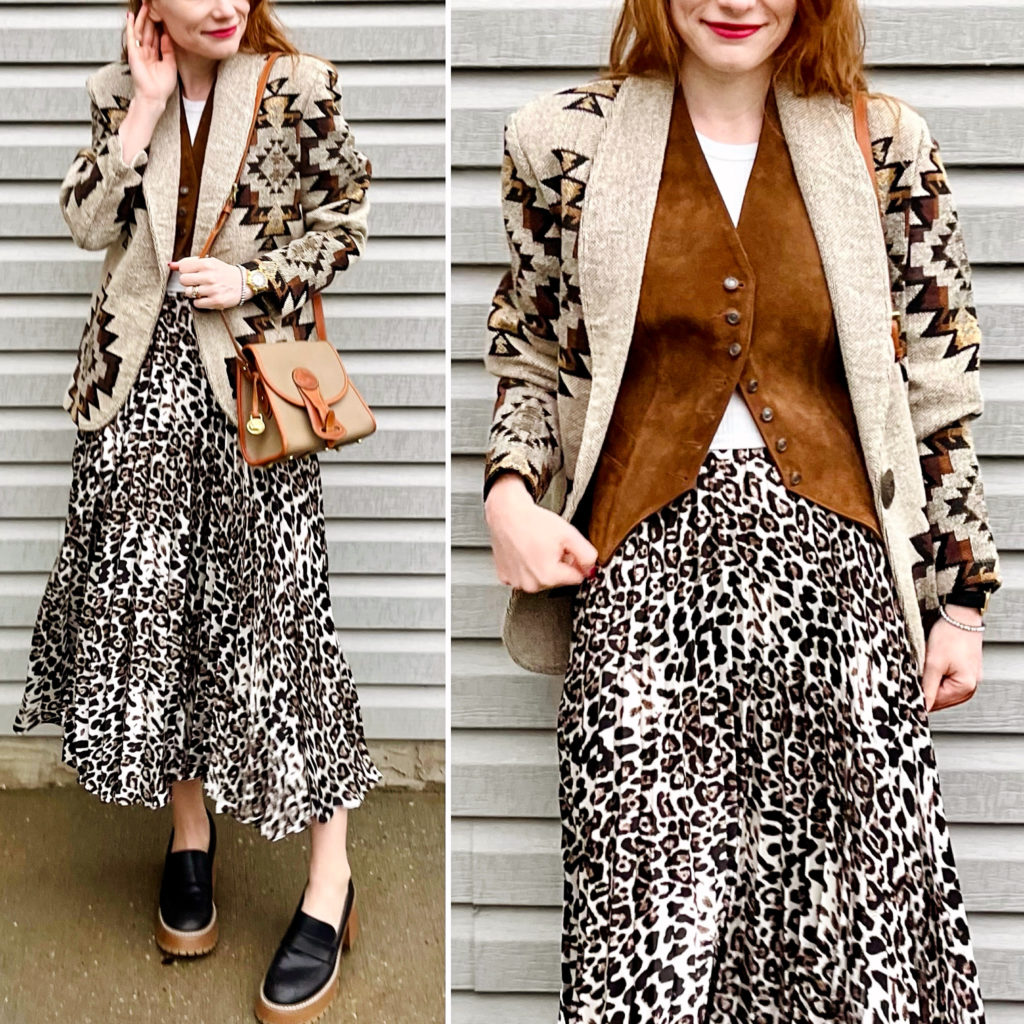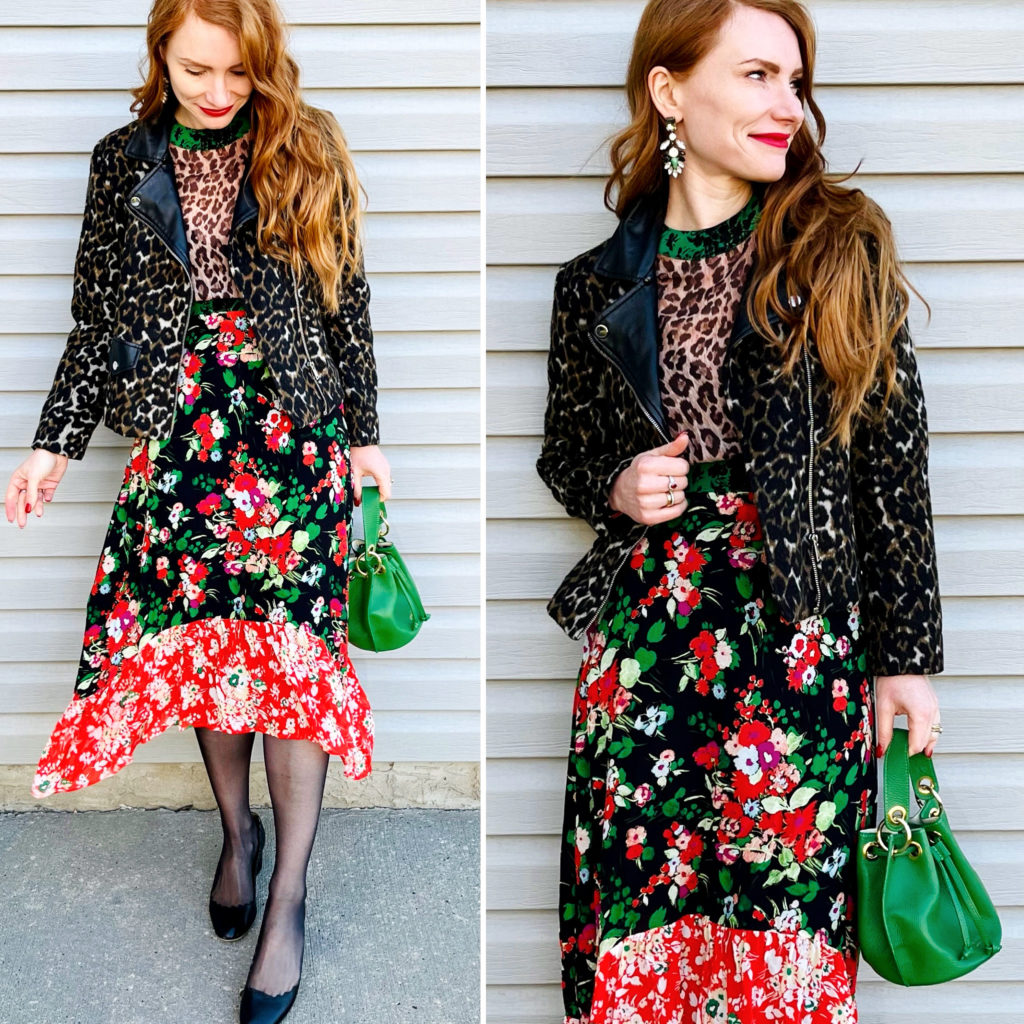
Details: Rixo dress, Amaryllis jacket, Chloe shoes, Anna Paola bag (all secondhand)
Thoughts: My social life is only occasionally exciting, so I make the most of my opportunities to dress up. A dinner with friends, with a side of drag show and burlesque, was definitely an opportunity not to be missed — sartorially and otherwise. This Rixo dress I recently thrifted at Goodwill seemed like the perfect bold choice. I chose the other pieces, including accessories, to complement the dress: leopard jacket, green bag. I used to wear opaque tights exclusively, but I’m currently digging sheer black nylons as a cool(er) weather practical accessory. At least until the snow hits, hah!
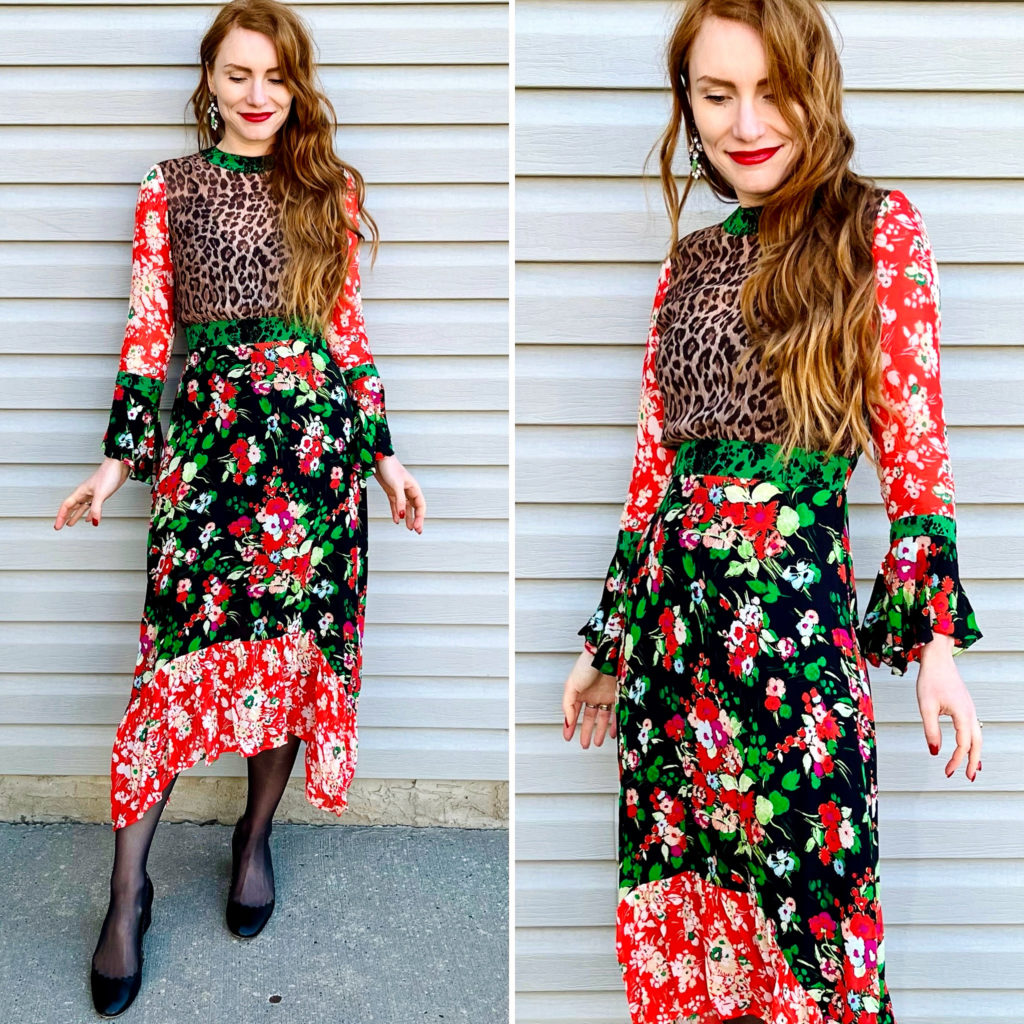
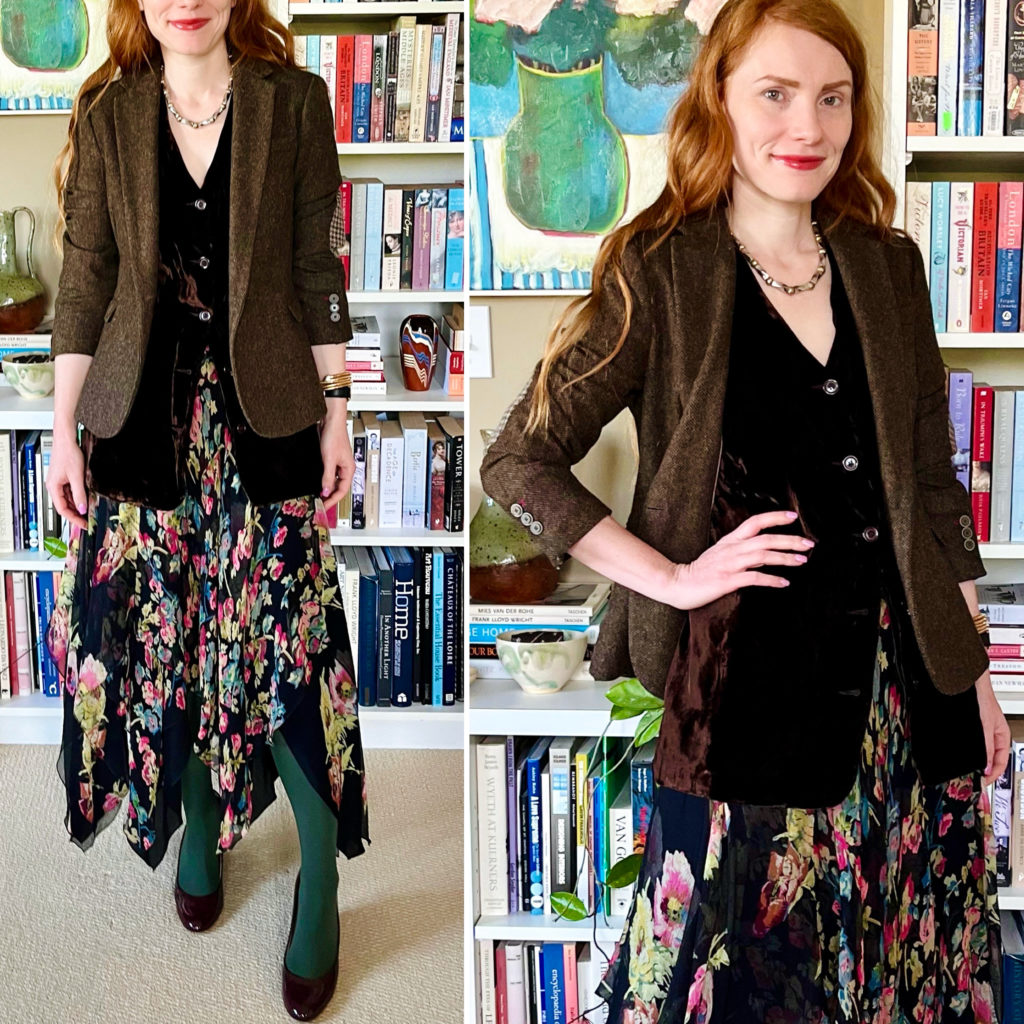
Details: Club Monaco vest, Zara blazer, Ralph Lauren skirt (all secondhand), J. Crew shoes (retail, old)
Thoughts: A layered, textured monochromatic brown moment. The longer vest/shorter jacket combo was a bit of a “climb out on a limb” choice, but I think it turned out quite nicely. And I took a further risk by choosing green, rather than brown, tights. I felt like the outfit needed something extra, and when in doubt, a pop of colour isn’t a bad bet — though, in this case, I didn’t want anything too stark or contrasting which might unbalance the colour palette.

Details: Club Monaco sweater, Michigan Rag Co jacket, Fossil belt, Dooney bag (all secondhand), Zara pants (retail)
Thoughts: I have collected so many wonderful coats over the years, it’s sometimes a challenge to find time to wear them all regularly. But I try to give each one at least one outing per season (and, of course, some get much more frequent wear) and it was time for my Bird Coat aka the Jessica Fletcher Special to make its fall appearance. It might not be my most versatile coat, but I love it so dang much! In the past, I’ve worn it with jeans, but I thought these brown Zara pants would be a nice alternative. TBH, they’re a nice alternative in a lot of cases … which is why I bought them. And I like to feel vindicated in my decisions, so here we are.
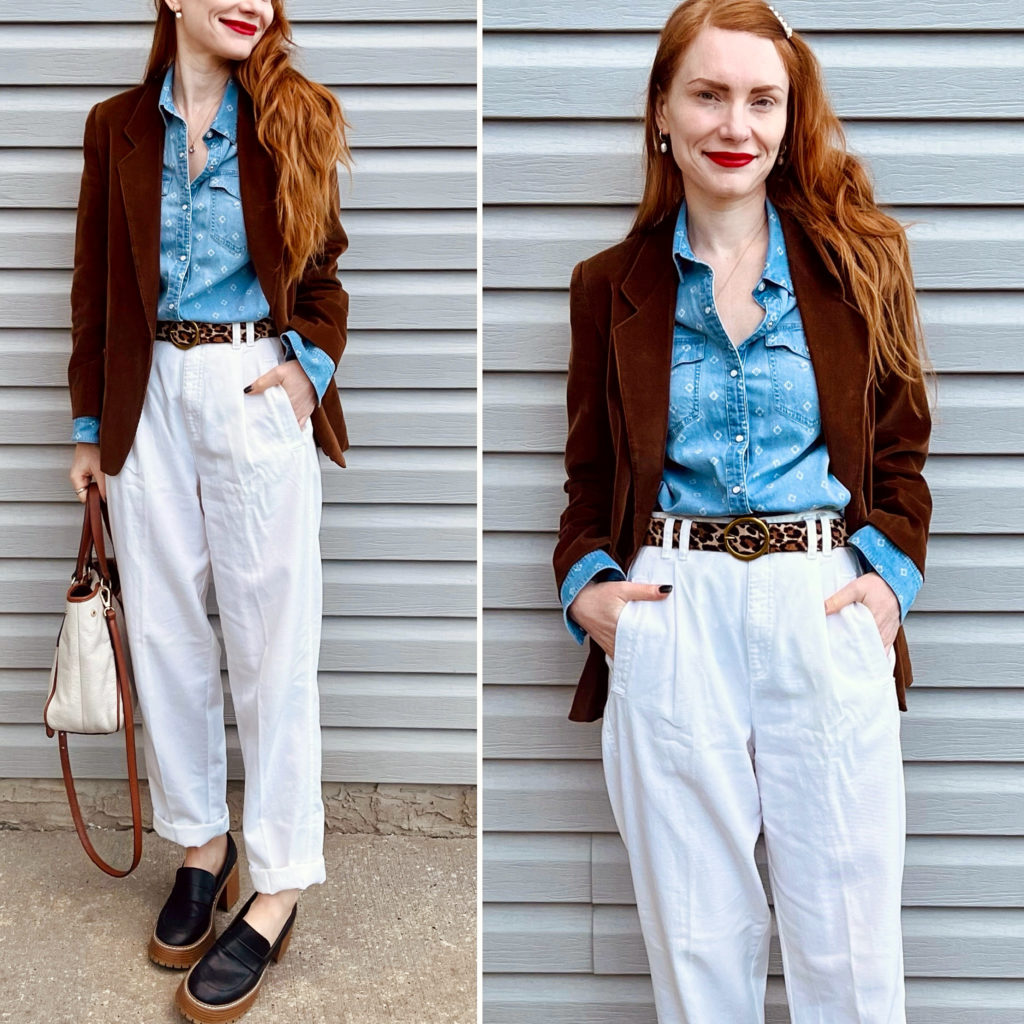
Details: Tahari shirt, Ports International blazer, Auxiliary belt, Liz Claiborne pants, Tommy Hilfiger bag (all thrifted), Mia shoes (retail, old)
Thoughts: I told you I would be wearing these white pants until the bitter end weather makes it impossible, and I am a woman of my word. Beyond the fact that they’re supremely comfortable and look great, it comes down to white. White is such a fabulous pairing for brown and blue — separately or together — and we all know how I feel about those colours. I don’t own a lot of white clothing (because I’m a klutz, I’ve avoided it for years) so I have to make the most of the items I do have. And if that means wearing these pants ad nauseam, well, so be it.
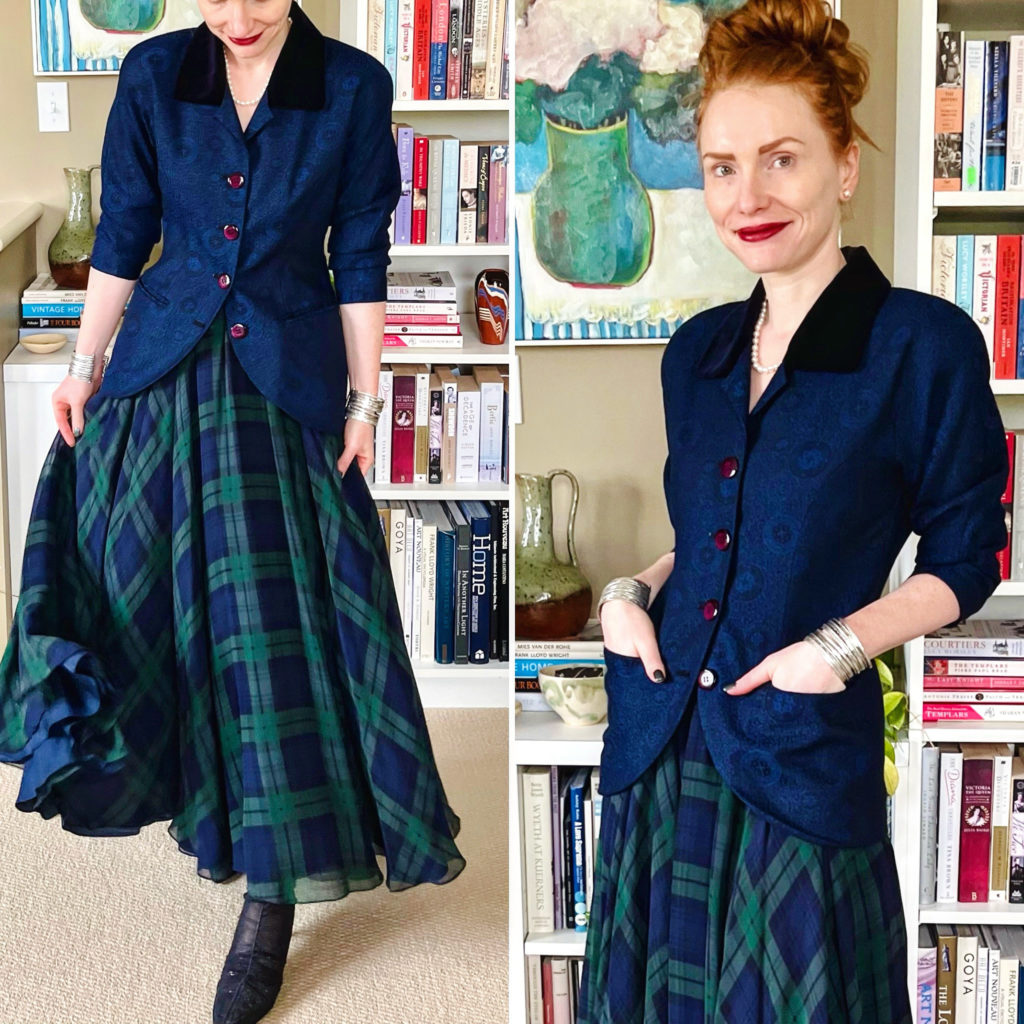
Details: Tahari jacket, Ralph Lauren skirt (both thrifted)
Thoughts: I love the Dior New Look vibe of this vintage jacket (probably 90s, but definitely retro-inspired) and I am forever looking for ways to emphasize it. My favourite swishy skirt plays the supporting role here nicely, I think. Bonus points for the green and blue palette, which never disappoints me. The overall energy here is what I’m calling Not-So-Dark Academia.
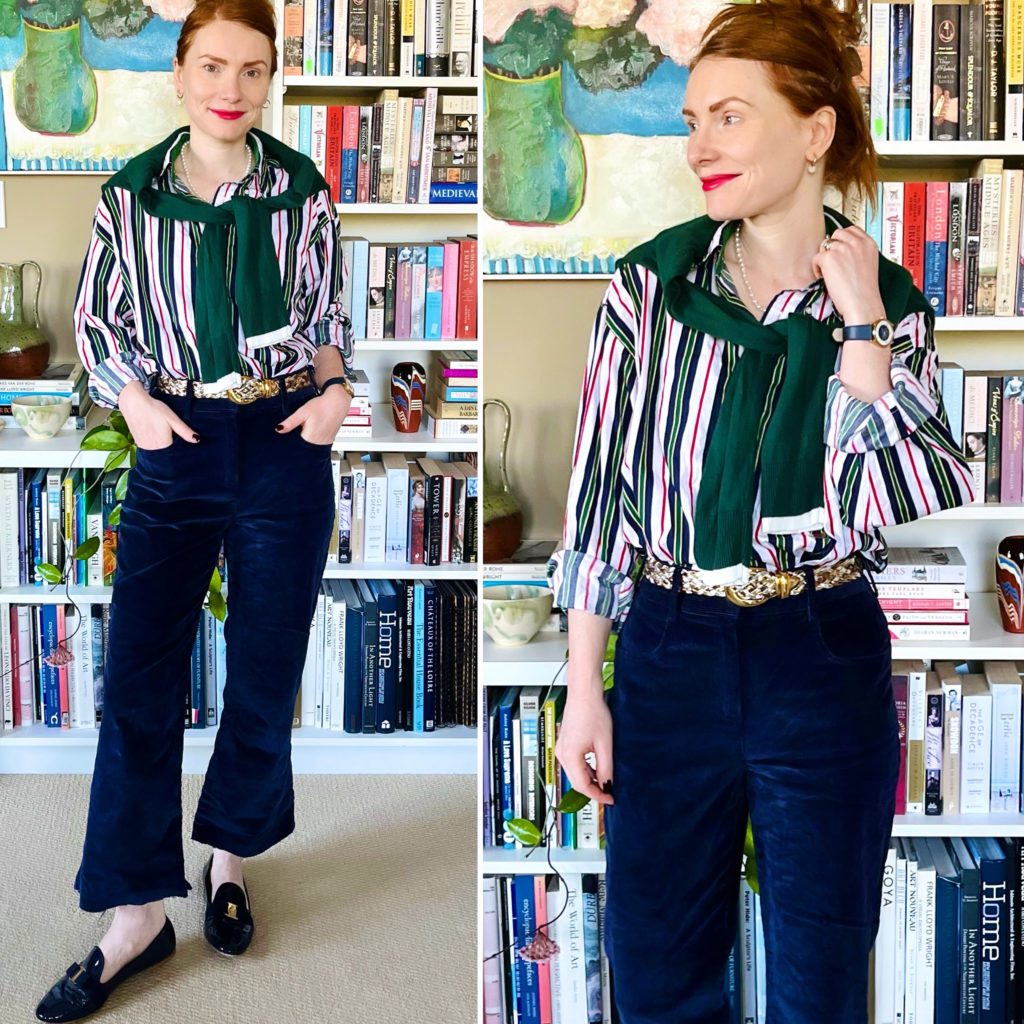
Details: Tommy Hilfiger shirt, Jones Collection sweater, Babaton pants, vintage belt, Ferragamo shoes (all thrifted)
Thoughts: I wrote about my fave colour pairings last week, and here’s another one of them: navy and dark green. With white as an accent colour, just imagine 😉
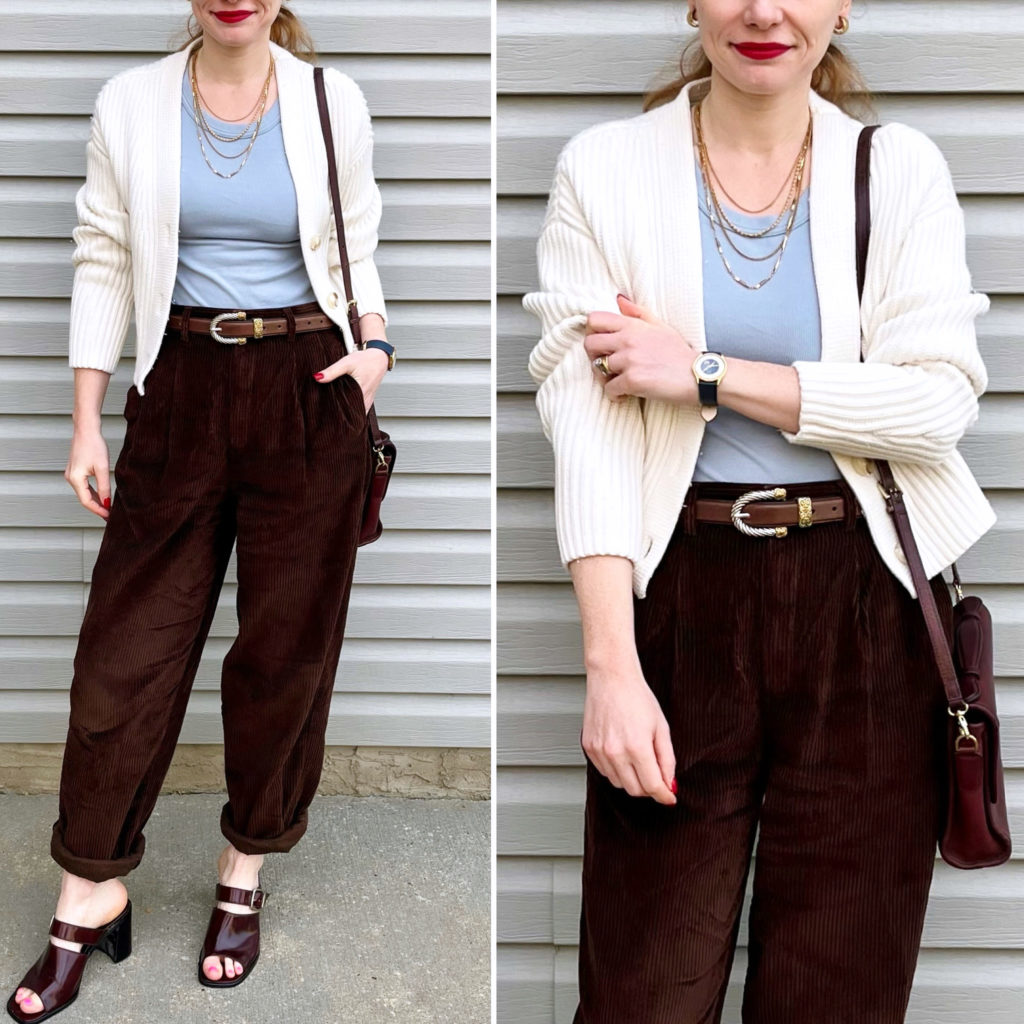
Details: Tahari tee, A&F cardigan, Fossil belt, Eddie Bauer pants, vintage shoes, Coach bag (all secondhand)
Thoughts: Super casual look, elevated with cool accessories. I thrifted this vintageish layered necklace and am obsessed with it as a subtle statement piece. Or is that an oxymoron? I know that piling on multiple delicate necklaces is trendy again, but while I don’t mind layering bracelets, I hate fussing with multiple necklaces. How do people keep them from getting tangled?? Anyway. A piece like this that does all the work for me? Genius. Love it. Also brilliant? These vintage shoes. They are definitely from the 90s, and my teenager self approves of them whole-heartedly. The square toe, the chunky strap, that gorgeous oxblood colour: what’s not to love?

